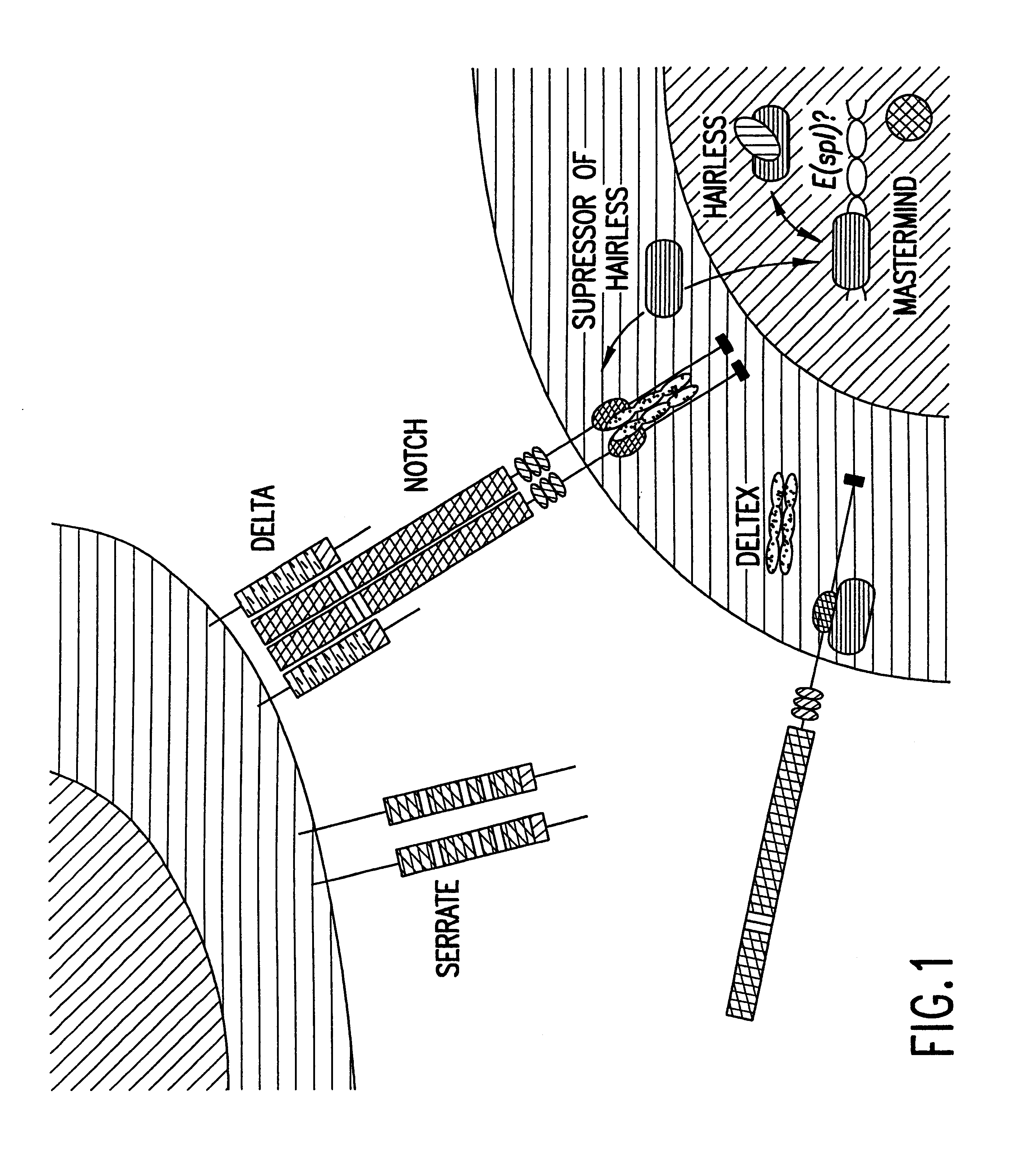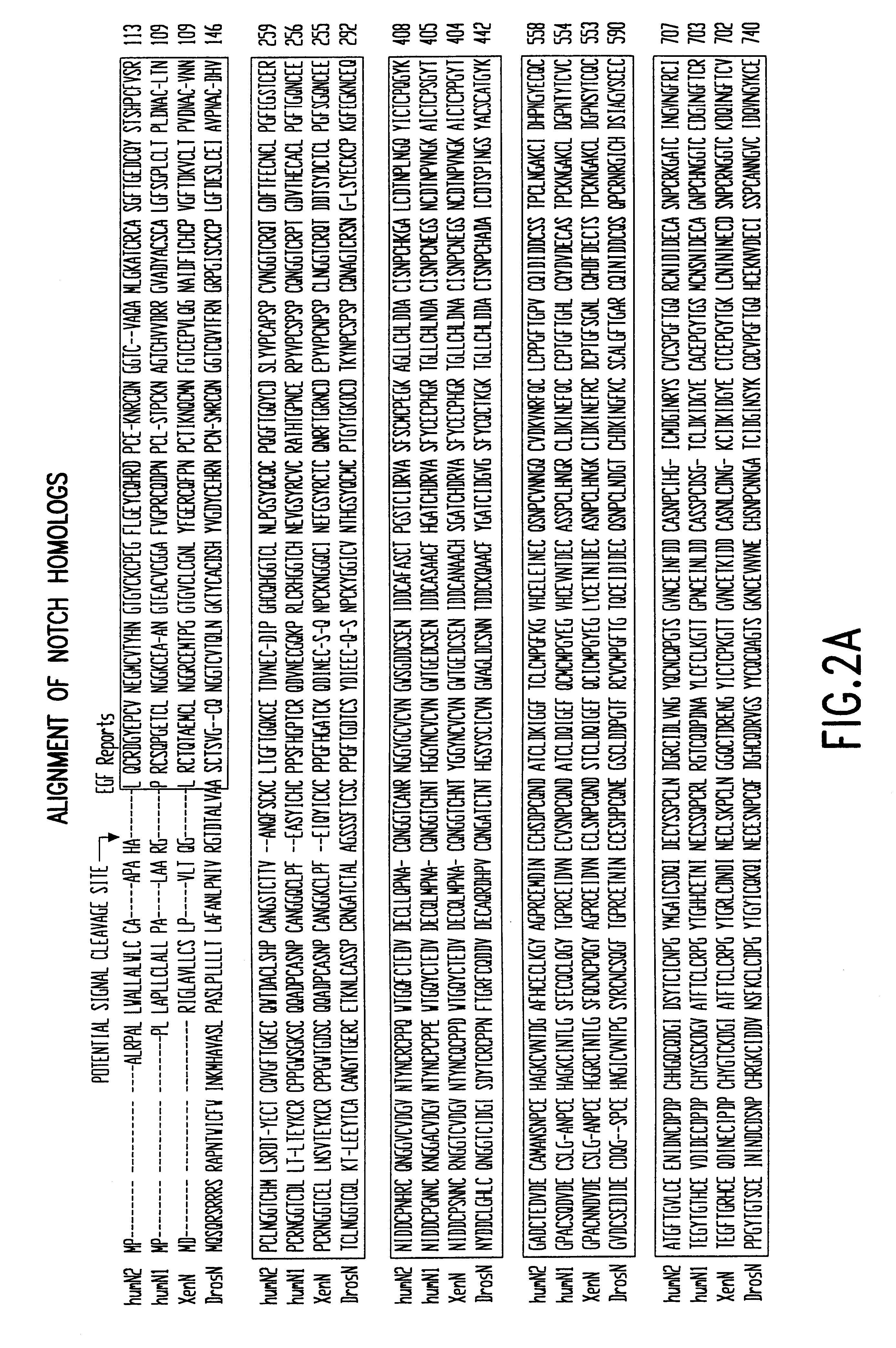Activated forms of notch and methods based thereon
a technology of activation and notch, which is applied in the field of activation forms of notch, can solve the problems of elusive biochemical nature of notch signaling and remain elusive, and achieve the effect of modulating notch activation and reducing agent-sensitive linkag
- Summary
- Abstract
- Description
- Claims
- Application Information
AI Technical Summary
Benefits of technology
Problems solved by technology
Method used
Image
Examples
Embodiment Construction
The present invention is directed to methods for detecting or measuring Notch activation by observing or measuring the appearance of Notch on the cell surface or by observing or measuring Notch cleavage products, that are indicative of Notch activation. In one aspect of this embodiment of the invention, the method for detecting or measuring Notch activation in a cell comprises detecting or measuring the expression of Notch on the surface of said cell, wherein the presence and amount of Notch on the surface indicates the presence and amount, respectively, of Notch activation. In another aspect, the method comprises detecting or measuring the expression of one or more Notch cleavage products selected from the group consisting of N.sup.EC and N.sup.TM. In yet another aspect, the method comprises detecting or measuring one or more fragments of Notch selected from the group consisting of an amino-terminal fragment of full-length Notch terminating between the epidermal growth factor-like ...
PUM
| Property | Measurement | Unit |
|---|---|---|
| Length | aaaaa | aaaaa |
Abstract
Description
Claims
Application Information
 Login to View More
Login to View More - R&D
- Intellectual Property
- Life Sciences
- Materials
- Tech Scout
- Unparalleled Data Quality
- Higher Quality Content
- 60% Fewer Hallucinations
Browse by: Latest US Patents, China's latest patents, Technical Efficacy Thesaurus, Application Domain, Technology Topic, Popular Technical Reports.
© 2025 PatSnap. All rights reserved.Legal|Privacy policy|Modern Slavery Act Transparency Statement|Sitemap|About US| Contact US: help@patsnap.com



